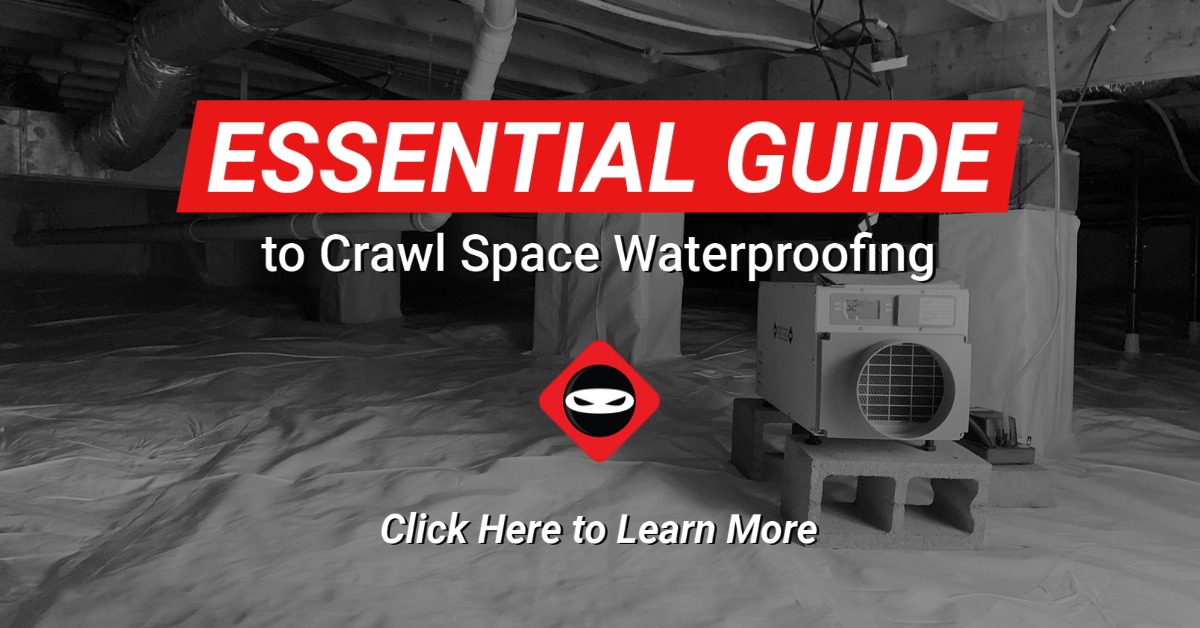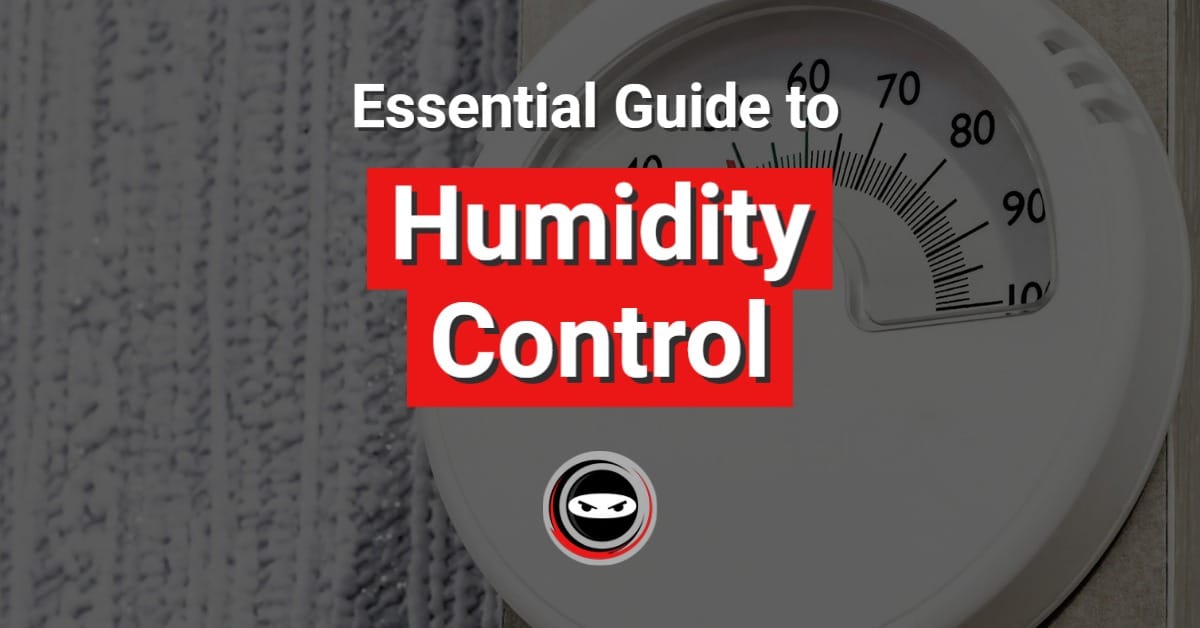Many homeowners are unsure if a crawl space vapor barrier is needed. Much less what type of vapor barrier to use. How should the vapor barrier be installed and much more.
We will be answering many of these crawl space vapor barrier FAQs and more in this article. If your question is not answered below, please submit it via our Ask-A-Ninja Online Form.
What is a Crawl Space Vapor Barrier?
Believe it or not, vapor barrier is the wrong term. It is actually a vapor retarder. Any type of class 1 vapor retarder can be used in a crawl space to help control moisture. Class 1 crawl space vapor barriers are typically made from polyethylene plastic. They are designed to cover the exposed earth of the crawl space in order to slow or prevent ground from evaporating.
When installed correctly, they can also help control flooding. Using vapor barrier, Hydraway drainage system and sump pumps is referred to as waterproofing or water management. Another vapor barrier FAQ is what does Class 1 mean?
What Does Class 1 Vapor Barrier Mean?
A class 1 vapor retarder is a material that has a perm rating of 0.1 perms or less. Class 2 products have a perm rating greater than 0.1 and less than or equal to 1.0. Class 3 vapor retarders have a perm rating greater than 1.0 and less than or equal to 10. A class 1 vapor retarder allows less moisture to pass through than a class 2 or 3. Class 1 vapor retarders are required since crawl spaces are notoriously damp.
What is Perm Rating?
The perm rating is a unit of measuring a material’s ability to retard or slow the diffusion of water vapor. Perm is short for permeability. Many homeowners assume plastics or vapor barriers or vapor retarders stop moisture. This misconception often leads people to thinking installing a class 1 vapor retarder alone will control crawl space moisture and humidity. Crawl Space Ninja has performed many unnecessary mold remediation’s on home’s because of this misconception.
Examples of Class 1 Vapor Retarders
- Glass
- Rubber Membrane
- Polyethylene Sheeting (vapor barrier)
- Sheet metal
- Aluminum foil
Examples of Class 2 Vapor Retarders
- Kraft paper coated with bitumen
- 30lb asphalt coated paper
- Unfaced expanded or extruded polystyrene insulation
- Plywood
Examples of Class 3 Vapor Retarders
- Unfaced fiberglass insulation
- Cellulose insulation
- CMU (concrete block)
- Brick
- House wrap
- 15lb asphalt coated paper
- Gypsum board
What is a Loose Laid Vapor Barrier?
This vapor barrier FAQ comes from those that purchased homes many years ago before crawl space encapsulation started becoming popular. A loose laid vapor barrier, also known as contractor grade vapor barrier, is when the class 1 vapor retarder is just thrown on the ground. It is done in a loose manner, many times not even covering all the crawl space dirt. This is acceptable practice among many builders even today.
Loose laid vapor barriers are the least line of defense against humidity intrusion from the earth. They are often gapped and not sealed with crawl space seam tape. Over the years the gaps become even larger as home repair professionals use the crawl space to fix plumbing other problems. This is the most common type of vapor barrier we correct.
Contact Crawl Space Ninja for Basement Waterproofing and Encapsulation
Please contact us to schedule your assessment to fix your crawl space, basement issue.
Do you need help with mold removal, crawl space encapsulation, crawl space insulation, vapor barrier, waterproofing, foundation repair, basement waterproofing, or controlling humidity in your crawl space?
If you live in Georgia, Delaware, North Carolina, South Carolina, Tennessee, or Kentucky, Crawl Space Ninja can help!
Also, let us know in the comments below if you have an idea for a new blog topic.
DIY Crawl Space Repair
Perhaps you’d like to tackle your own crawl space repair. Visit our DIY Store.
Join Crawl Space Ninja as an Owner
Learn about Crawl Space Ninja Franchise opportunities.




